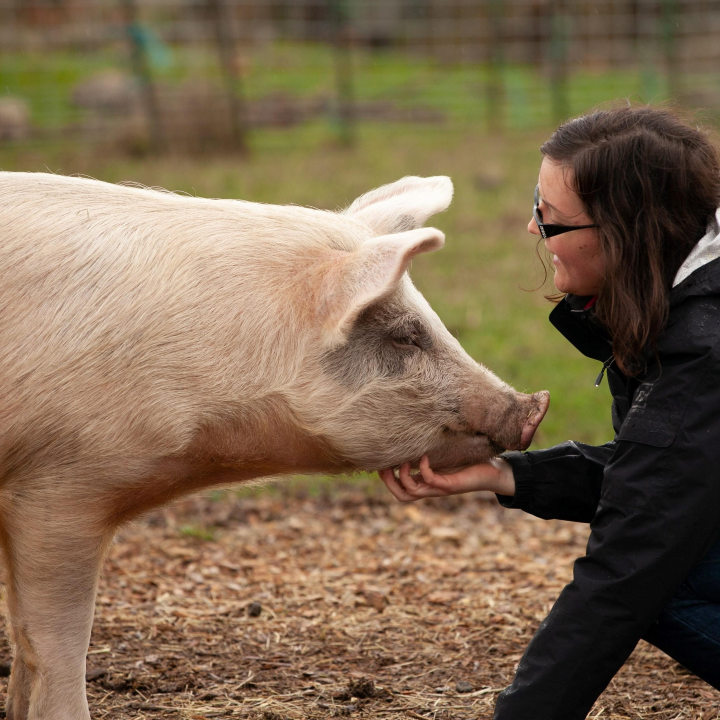The CoRouge project successfully built a dossier for the European Food Safety Authority (EFSA) registration and approval for a new source of copper in feed. “This form of copper has never been used in animal nutrition before, which is why we had to apply for approval,” explains CoRouge project coordinator Stéphane Durosoy, President of Animine in France. “Expertise was critical here.” Through partnering with a Norwegian company on this collaborative project, Animine was able to get its product approved and begin commercialisation.
Thriving through excellence
Stringent safety rules have made the EU a world leader in feed safety, traceability and biosecurity. Durosoy points out that when Animine exports its feed additive products, it also exports the EU’s regulatory framework. This is something that customers invariably see as a positive. “I’m the type of guy that will usually defend the work of the EU,” says Durosoy. “It is too easy to blame bureaucracy and say there are too many rules, but I think the job EFSA and the EU have done over the past 20 years in terms of food and feed safety has been incredible.”
Being the world leader in feed safety has opened up new commercial opportunities for European firms. Many Asian countries with high human and animal densities for example are looking to Europe to ensure that feed and food safety are of the highest standard. “Animal feed is at the top of the chain, and what we do here has consequences downstream,” explains Durosoy. “This is why EU feed safety regulations are so stringent. One batch of contaminated feed additives will affect hundreds of feed plants, thousands of farms and so on.”
Submitting a winning dossier
Additives are added to feed to fulfil the dietary and health requirements of animals. “Copper is a nutrient, and you need to supplement this in feed or else animals will be nutritionally deficient,” says Durosoy. “Copper also has antibacterial properties, which explains why it is used as a gut health promoter.” Added at a supranutritional level, copper can improve gut health, the digestibility of feed, reduce digestive disorders and thus limit the use of antibiotics in agriculture. This is one of the aims and objectives of the World Health Organisation’s One Health Action Plan against Antimicrobial Resistance.
“It is all about balance,” adds Durosoy. “Too much copper and you’ll get too much in animal waste and too much in the fields. It’s not black and white; you cannot use as much as you want, nor can you totally ban it.”
Durosoy believes that participating in a Eureka project gave their company more ambition and confidence. “It is a sign to the industry that your company and project have been approved by a respected third party,” he says. “This creates confidence in your customers.” Project support was also vital for a small company without all the in-house expertise or time to submit a winning dossier. “The more we could liberate our time from this task, the better,” says Durosoy. “We wanted to maximise our chances of success.”
Challenging times
Following approval from EFSA, the measure was published in the EU’s Official Journal in December 2016, legally authorising the use of Animine’s copper in feed. However, at the same time, there was an ongoing political discussion about a new regulation governing levels of copper in pig feed. “This was a pretty uncertain time for us,” says Durosoy. “No feed company wanted to make a decision until regulatory changes were announced.” This meant that between December 2016 when the additive was legally authorised, to the summer of 2018 when a new EU regulation on copper levels in feed was published, there were virtually no sales for usage in pig feed.
“After this new regulation was published, companies began to pay a great deal of attention to our product,” says Durosoy. “Nonetheless, we were frozen for a year. This was incredibly stressful, because of course we have sales targets and forecasts. We knew that submitting a dossier is costly and you often need to be patient though. It is a long term project.”
Targeting sustainable agriculture
The success of the CoRouge project has led to another Eureka project entitled SUMINAPP, which was launched in 2018. This project, coordinated by Animine in collaboration with PigCHAMP Pro Europa (Spain) and CIRAD (France) aims to gain more knowledge about the impact of this copper-based feed additive (as well as zinc) on animal health and the environment. “Eureka projects like this are about applied research,” says Durosoy. “Our aim is to relate what the science has found, and give this a value in terms of market expectations and customer requirements.”
To this end, SUMINAPP will provide tools to help the agricultural sector implement precision mineral supplementation strategies. These will be both effective and sustainable for pigs, broilers, ruminants and aquaculture. The project will deliver guidance for copper and zinc supplementation in animal feeds and recommendations for non-invasive biomarkers of intestinal health in animals. It will also produce scientific information on metals in animal waste.
“The aim is to produce scientific findings that start from the feed additive itself right through to when manure is being sprayed on the soil,” says Durosoy. “It is about connecting the relationship between the additive, the animal, the farm, animal waste and the soil.” Durosoy notes that this project fits very much into the EU’s objective of achieving a circular economy. “We are not treating animal waste as waste as such, but as a resource,” he says. “It’s all about listening to the science.”
Partners: Animine (France), Nordox (Norway)
Project ID: 9217 CoRouge (Eurostars)
Project duration: March 2015 to February 2017
